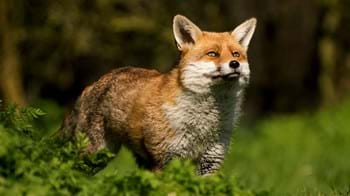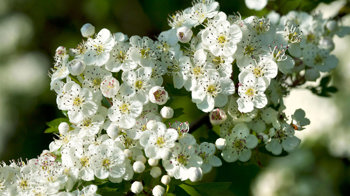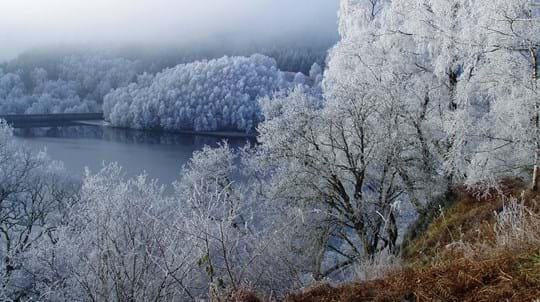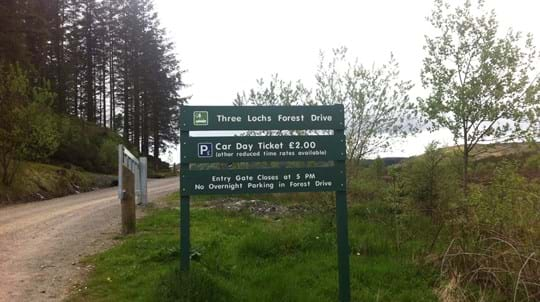
Glen Finglas
Brig o'Turk

Woodland Trust wood group
- Glen Finglas
- Milton
- Bochastle Hill
4,095.28 ha (10,119.44 acres)
NN521108
Explorer 365
OS Landranger 57
The Glen Finglas estate is vast. In fact, it is the largest site in our care. Home to mountains and rivers, hills and glens, woodland and moorland, it is perhaps best known for its upland wood pasture – old growth trees growing on open pasture land. Glen Finglas has one of the finest examples of this habitat in the UK and a herd of Luing cattle who help us to keep it this way. It is this special landscape that the Trust has been conserving for over 20 years.
Glen Finglas lies at the heart of Loch Lomond and the Trossachs National Park and is part of the Great Trossachs Forest National Nature Reserve – a 200-year-long landscape-scale woodland restoration project involving the RSPB, Forestry & Land Scotland and the Woodland Trust.
The estate has something for every visitor: a wealth of wildlife to spot; intriguing stories of the people who once lived here; a rich literary heritage; nine waymarked routes for walkers and cyclists and a natural playtrail for energetic children (and adults).
Be sure to visit the Visitor Gateway centre in the Lendrick Hill car park. Open seven days a week, all year round, it has an accessible toilet and is packed with information about the estate, our conservation work and what to see and do during your visit.
Features
- Parking at site
- Parking nearby
- Public access
- Autumn colour
- Spring flowers
- Waymarked walk
- Grassland
- Marshland
- Moorland
- Broadleaved woodland
How to get to Glen Finglas
The 4,875-hectare (12,044-acre) Glen Finglas Estate partly surrounds the small village of Brig o’ Turk at the heart of Loch Lomond and The Trossachs National Park. The estate is made up of Glen Finglas (4,096 hectares/10,121 acres), Milton (756 hectares/1,868 acres) and Bochastle (23 hectares/57 acres). It includes the glens of Finglas, Meann and Casaig, Milton, the southern slopes of Stuc Odhar (Lendrick Hill) and land along the shore of Loch Venachar.
The estate is at the eastern end of the Great Trossachs Forest NNR which stretches from just outside Callander to the shores of Loch Lomond.
From Glasgow, take the A81 to Aberfoyle, then the A821 over the Duke’s Pass and travel through Brig o’ Turk to the car park. Should the Duke’s Pass be closed due to weather, follow the A81 from Aberfoyle through Port of Menteith and into Callander.
From Edinburgh, head west to junction 10 at Stirling then take the A84 to Callander. Continue for 1.6km (1 mile) north to Kilmahog, then turn left onto the A821 to Little Druim car park, 7.6km (4.7 miles) on the left. Lendrick Hill car park is a further 0.8km (0.5 miles) on the right.
The nearest train station is Bridge of Allan, 29km (18 miles) from the wood. There is another train station in Dunblane, 31 km (19 miles) from the wood.
Visit National Rail for more information.
Unfortunately there are no bus stops within 8km (5 miles) of the wood but there are buses to Callander from Stirling and to Aberfoyle from Glasgow & Stirling (Callander and Aberfoyle and 9.6km/6 miles and 12.8km/8 miles away respectively). You can also pre-book Demand-Responsive Transport which operates all year round.
Visit Traveline Scotland or Stirling Council for more information.
You can cycle to Brig o’ Turk from Callander on the Great Trossachs Forest path and/or National Cycle Network (number 7), along the south side of Loch Venachar.
Facilities and access
The Visitor Gateway is open seven days a week from 10am-4pm.
Glen Finglas has a network of waymarked walking routes to suit a range of abilities. Most start at the Visitor Gateway in the Lendrick Hill car park.
There are low-level routes on surfaced paths over undulating terrain, partially surfaced paths which may have short, steep sections, and challenging routes with steep sections through remote areas. Suitable outdoor clothing, strong footwear, a map, compass and food and drink are advised for the more strenuous routes.
Pick up printed maps and leaflets at information points in some of the larger car parks.
There are several car parks to choose from. The main car park is at Lendrick Hill, next to the Visitor Gateway. It has over 20 permanent spaces plus an additional 20 seasonal spaces and is approximately 0.8km (0.5 miles) east of Brig o’ Turk village.
Little Druim car park (12 spaces) is 1.6km (1 mile) east of the village, and Dam Road car park (six spaces) is on the Dam Road just before the Finglas Reservoir Dam.
Bochastle Forestry & Land Scotland car park (15 cars) is at the eastern end of the site, about 8km (5 miles) from Brig o’ Turk and just outside Kilmahog.
There are toilets located in the Visitor Gateway.
Wildlife and habitats
Animals
Lovers of rare wildlife will love Glen Finglas as it is home to many iconic animals. The red squirrel is so abundant here you might even spot one by the Visitor Gateway or at the feeding station on the play trail. The majestic red deer is also frequently seen, along with the playful otter and tiny field vole. The site provides important habitats for rare and endangered species, such as pine marten, osprey, golden eagle and black grouse.
Trees, plants and fungi
With dazzling bluebells, weird and wonderful fungi, a variety of trees and shrubs and a selection of vivid wild flowers, Glen Finglas is full to the brim with breathtaking species.
Habitats
From rare ancient woodland to open grassland areas, wood pasture and marshland, Glen Finglas is the perfect place to discover a wide range of habitats.
In 1996, we acquired Glen Finglas with the support of the Heritage Lottery Fund. This was followed by acquisitions of the Lendrick plantation, land at Bochastle, and a Milton Glen lease, which includes Milton Burn and the summit of Ben Ledi.
About Glen Finglas
History
Glen Finglas is steeped in a rich history. The landscape was carved by glaciers during the last Ice Age and these have left behind large boulders, such as Samson’s Stone at Bochastle.
There is evidence of human settlement dating from medieval times. In 1364, Glen Finglas was taken into royal ownership and for over 300 years was a popular hunting forest for Scottish kings and nobility.
The famous outlaw, Rob Roy McGregor, immortalised by Sir Walter Scott’s historical novel, Rob Roy, lived in the area during the late 17th and early 18th centuries and is buried in the churchyard at the village of Balquhidder. Glen Finglas was the site of conflicts between the MacGregor and Colquhoun clans around this time.
Glen Finglas inspired poets such as Wordsworth, Coleridge and Gerard Manley Hopkins. Sir Walter Scott’s Glenfinlas (1803) is said to have been named after the glen and his epic poem, The Lady of the Lake (1810), is set around nearby Loch Katrine.
Conservation and threats
Glen Finglas is part of one of the most significant woodland regeneration projects to take place in a generation.
The Great Trossachs Forest NNR stretches from just outside Callander to the shores of Loch Lomond. With Glen Finglas in the east, the RSPB’s Inversnaid nature reserve in the west and Loch Katrine (managed by the Forestry Commission) in the middle, the project covers an area equal in size to Glasgow.
Launched in 2009 by the Scottish Forest Alliance, the project has a 200-year lifetime. Ultimately, it will be one of the largest native broadleaf woodlands in the UK, providing visitors and local people with a range of opportunities to experience this iconic landscape.
We’ve already achieved a lot. A large area of mosaic woodland and open habitats has already been created. Ecosystems damaged through years of over-exploitation continue to be restored and enhanced to increase the potential of wildlife to adapt to climate change, and partners work collaboratively to encourage as many people as possible to experience the incredible natural beauty and unique cultural heritage of the area.

Glen Finglas: a 25 year transformation
As we celebrate a milestone for this magical site in the heart of Scotland, we take a look back at everything we’ve achieved – and how it reflects our wider work and values.
Explore the changes
A lasting legacy
This wood is just one of many to have been protected by gifts in wills, securing it for generations to come. Your legacy gift could also make a real difference to woods, trees and wildlife.
Learn what your gift could meanThings to do in Glen Finglas
Walking
With nine waymarked routes, there is a walk for everyone at Glen Finglas. So dust off your walking boots, put on your waterproofs, grab your map and get walking! Download the site leaflet.
If you want to keep exploring this wonderful landscape, you can find extended walks with the Great Trossachs Forest.
The Great Trossachs Path is a 48km/ 30 mile long trail which traverses the entire length of The Great Trossachs Forest from Callander in the east to Inversnaid by Loch Lomond in the west. It is one of Scotland’s Great Trails and connects the infamous West Highland Way with the popular Rob Roy Way. Spurring off The Great Trossachs Path is 165kms of short, long and circular routes of various lengths and challenges, each with its own unique character.
Play Trail
Explore Glen Finglas as a family and follow the Play Trail through Little Druim Wood. Discover magic, music and dens in beautiful ancient woodland and listen to woodland sounds and stories with our audio soundscape. Download the Natural play and sculpture trail leaflet or pick up a copy in the car park for extra facts and a quiz. This walk takes around 40 minutes.
Cycling
Take in the stunning views at Glen Finglas on two wheels. You can find information about local cycling routes, bike hire and start points with the Great Trossachs Forest.
The Meall is a 24km route popular with mountain bikers seeking a strenuous challenge. Long and short sections of The Great Trossachs Path are popular with cyclists too.
The Great Trossachs App
Discover more about the Trossachs using The Great Trossachs App for iPhone. It’s packed with information about the area’s wildlife, geography and history and can be used to interpret the landscape when you are out and about. The Great Trossachs App is free to download and available on iOS – just search ‘Trossachs’.
Take a virtual tour of The Great Trossachs Forest
This virtual tour showcases the spectacular beauty of The Great Trossachs Forest NNR from 12 different vantage points, including five at Glen Finglas. Explore a 360 degree view at each vantage point and witness how that view changes through the seasons.

Visiting woods
Walking dogs in our woods
Dogs are welcome for walkies in our woods. Take a look at our tips and guidelines for ensuring we keep our woods safe and special for dogs and wildlife.
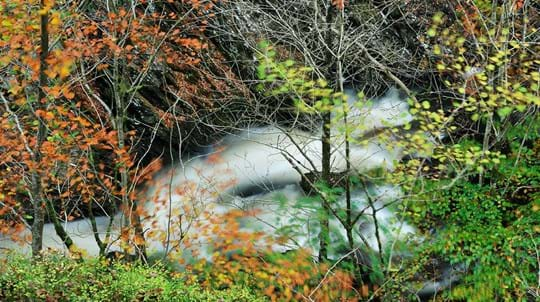
360 tour
Discover Glen Finglas
Explore Glen Finglas and The Great Trossachs Forest through the seasons in interactive 360 images.
External link

Visiting woods
Events
Discover events at our woods and the festivals and fairs you can find us at soon.
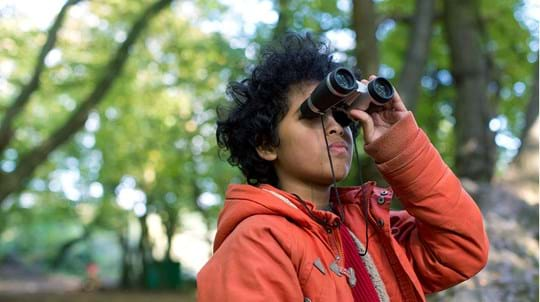
Visiting woods
Things to do in the woods
Go on an adventure. Get closer to nature. Uncover history. Discover ways to explore the UK's woods whatever the season.
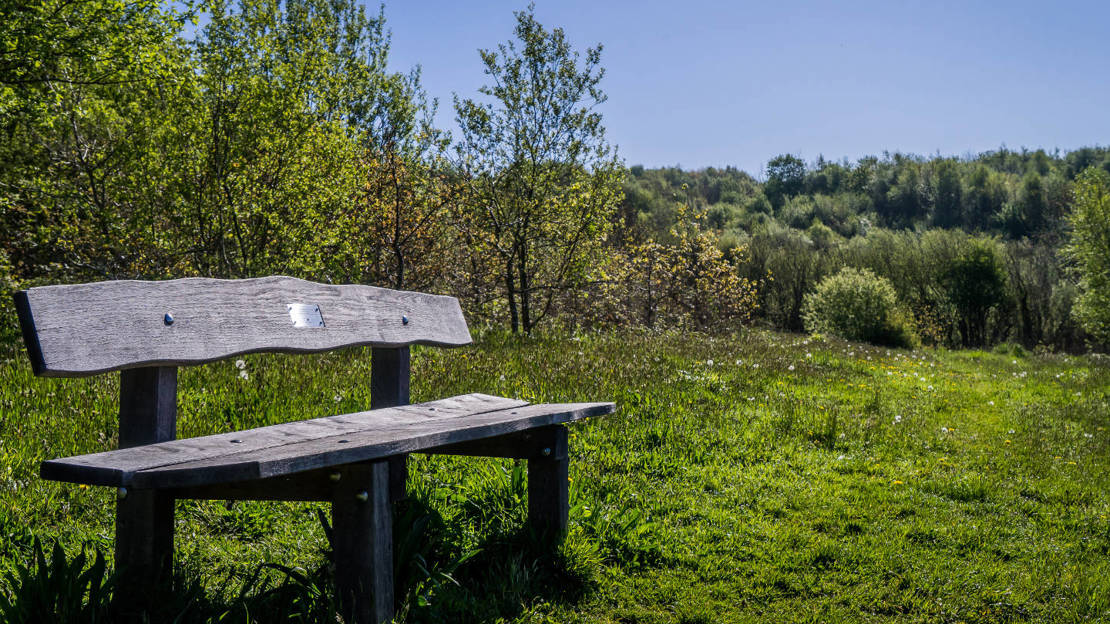
Dedicate at this wood
This wood is one of more than 50 across the UK where it's possible to dedicate trees, benches or larger areas of woodland. Mark a special occasion or celebrate the life of a loved one with a meaningful gesture that lasts.
Choose a dedication
















